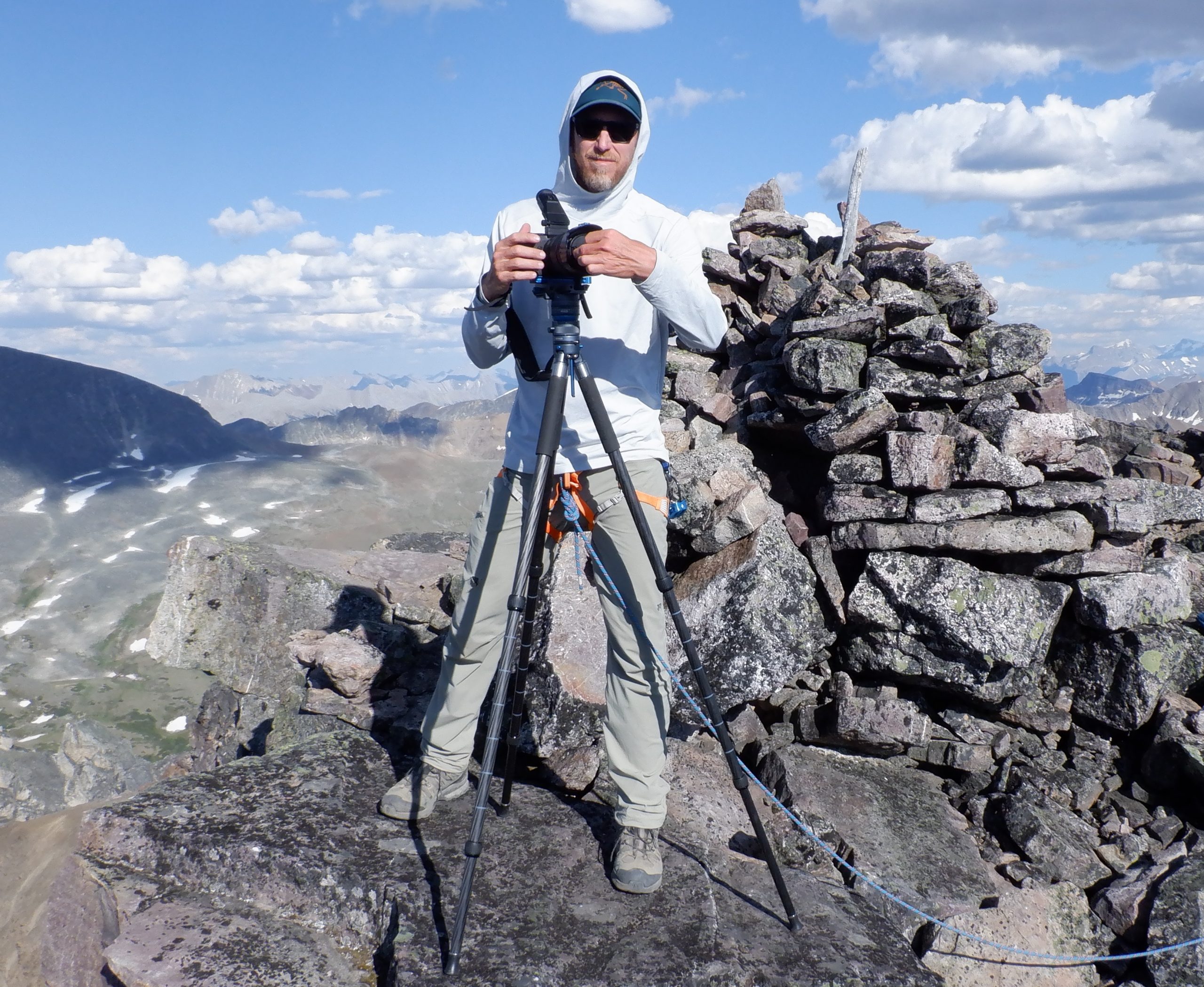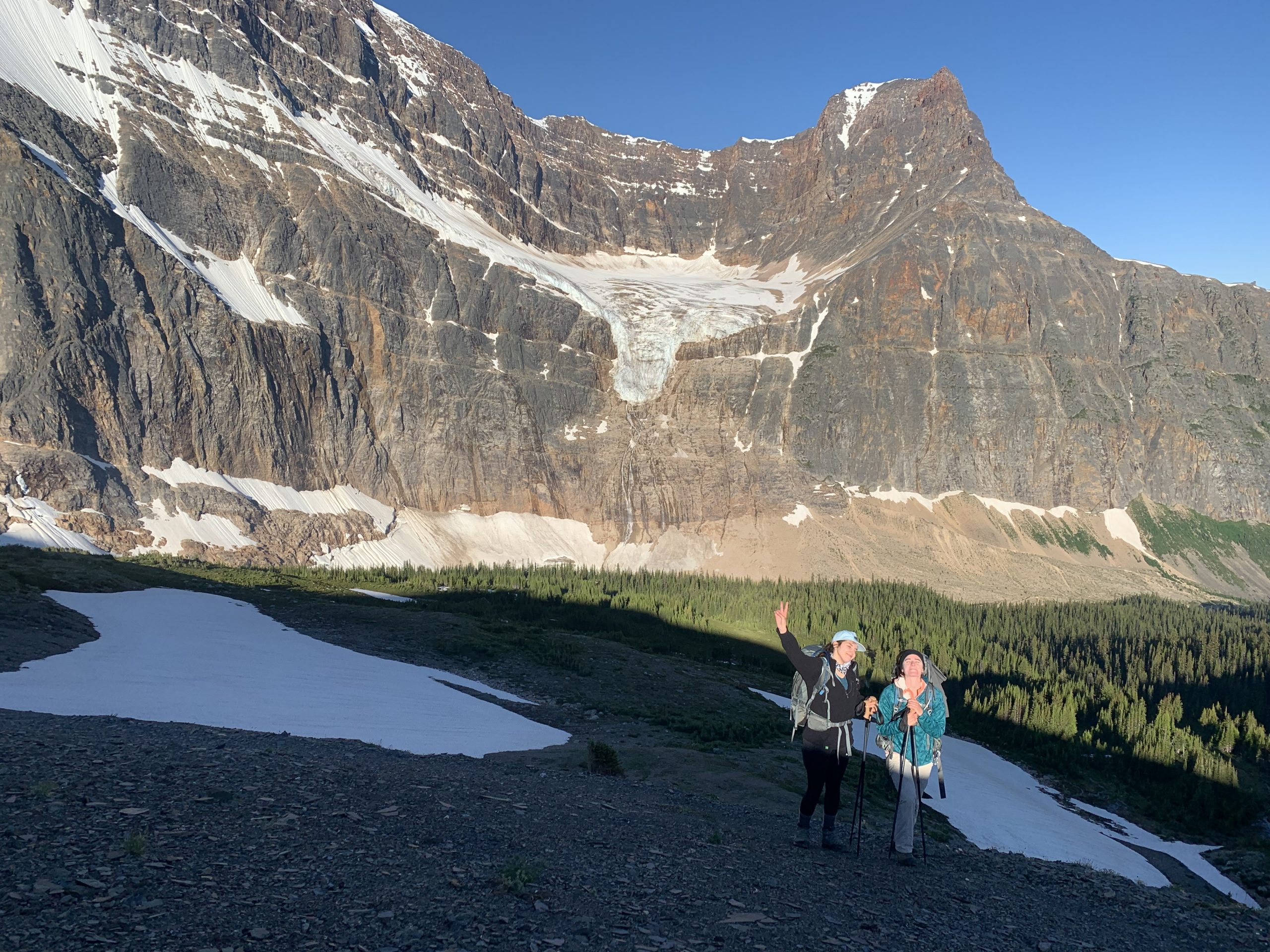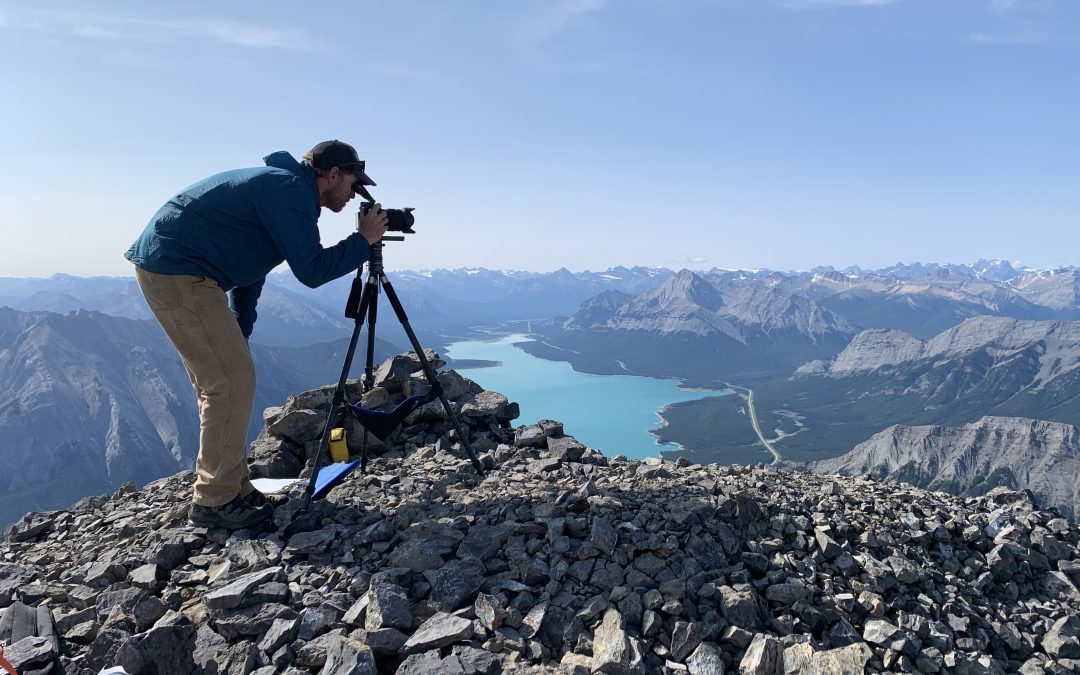By James Tricker, July 12th, 2024
With MLP fieldwork underway in the mountains this summer, one long-time crew member is (very reluctantly) sitting this season out to instead focus on writing up his dissertation (one last mountain, James). Here, he reflects on what he’s learned, recalls some of the challenges and triumphs of each year, and thanks the mentors and fellow graduate students who make this research possible.
*****
I’ve been fortunate to repeat historical survey photographs in spectacular environments throughout the Canadian Rockies and beyond. As I reflect on my four field seasons with the Mountain Legacy Project (MLP), I think of how the vast collection of photographs provides insights into the composition and configuration of ecosystems (and the processes that govern them) before pervasive human impacts. However, the fieldwork was also a once-in-a-lifetime experience, and I feel privileged to have spent long days in the field with my fellow crew members.

James Tricker atop Mount Tekarra in Jasper National Park. Photo credit: Shima Tajarlou.
My first fieldwork season back in 2019 was a whirlwind. As part of a roving 4-person team, we visited a variety of beautiful locales along the eastern flank of the Rockies. Stationed at Alberta fire-fighting bases, we repeated photographs in Crowsnest Pass, Kananaskis Country, and remote sub-ranges north of the Bow River. We also took threepeat photographs (i.e., third in a sequence of repeat photographs) in Waterton Lakes National Park to capture the aftermath of the Kenow wildfire, which burned through 38% of the park in 2017. And another thirdview project for my research was initiated in Jasper National Park, this time to capture the impacts of a pervasive mountain pine beetle outbreak.

Drs. Jeanine Rhemtulla and Eric Higgs, who undertook the very first repeat photography study for the MLP in 1996, confidently situated at the correct camera location during a revisit to the tricky Old Fort Point in Jasper National Park. Note the extensive red taint of beetlekill in the background.
The following year, the Covid-19 pandemic brought considerable uncertainty to summer fieldwork plans. Fortunately, after much paperwork(!), a small window emerged in the late summer for a 3-week blitz of repeat photography. Our team started in Crowsnest Pass again, with a specific focus on the mining history of this region. This fieldwork was particularly challenging, as the mining infrastructure evident in the historical photographs had since fallen into disrepair or had disappeared entirely. Next, we moved up to the picturesque Peter Lougheed Provincial Park to capture repeat photographs supporting a project investigating indigenous burning practices. The final leg of this shorter season was a return to Jasper National Park to take threepeat photographs in the Athabasca River valley. The work was often intense, involving big hikes or carefully coordinated helicopter days. All in all, it was a deeply satisfying and productive season given the early uncertainty and tight schedule.

Kristyn Lang and Sonia Voicescu hiking up to an A.O. Wheeler station in the picturesque Peter Lougheed Provincial Park.
The 2021 season brought a more familiar challenge to MLP fieldwork: widespread wildfire smoke. I joined up with the team in mid-July to assist with fieldwork examining glacial retreat in Glacier National Park. It was fantastic to be working in the impressive Selkirk Range, and our plans involved multi-night camping trips into rarely visited corners of the park. We managed to repeat a couple of stations in the Bald Hills and surveyed the forefield of the remote Avalanche glacier before getting shut down by smoke. A decision was made to delay the next leg of fieldwork in Jasper National Park by a month, only to arrive in late August and discover the high-alpine blanketed in snow. Valiant attempts to hike up to camera stations proved unsuccessful. A return trip in mid-Sept when helicopter support was available yielded one very cold repeated station, but the main objective remained elusive. That’s just the way it goes sometimes: disappointing decisions can be required to ensure team safety.

Suzie Zak and Astra Lincoln prepping images under smoky skies in the Bald Hills in Glacier National Park.
My final fieldwork season was, again, a completely different experience. I expanded my study area in Jasper National Park to include two additional valleys, which required threepeating another 21 stations. Joined by two fellow graduate students, we arrived in the park at the beginning of July for an extended stay. After a slow start, hampered by lingering alpine snow from the previous winter, we soon picked up momentum and ticked off 16 stations by the end of the month. The team also assisted another MLP researcher for an eventful day of repeat photography in the adjacent Willmore Wilderness Park. In early August, I drove up to Haines Junction for a unique opportunity to repeat photographs in Kluane National Park. Repeating this station was very much a bucket list experience, made extra special because the historical photos were captured in 1899! I returned to Jasper in mid-August to complete the remaining stations during beautiful late-summer weather.

Shima Tajarlou and Catalina Madrid catching first light in front of the impressive Angel Glacier on a hike to repeat stations in Clavell Meadows in Jasper National Park.
After four wonderful field seasons with the MLP, there are many people I want to acknowledge and thank. Firstly, it’s been a privilege to work in the field alongside my fellow graduate students: Sonia Voicescu, Cass Buunk, Alina Fisher, Astra Lincoln, Claire Wright, Shima Tajarlou, Sarah Jacobs and Catalina Madrid. Our shared experiences have created an enduring camaraderie. I have also been fortunate to work with highly capable and enthusiastic volunteers, specifically Charles Hayes, Kristyn Lang, Suzie Zak, Ellen Whitman, and Caitlin Mader. Behind the scenes, Rob Watt, Mary Sanseverino, Kristen Walsh, Shania LaFreniere, Kate Fryer, Larissa Bron, and Jill Delaney have selflessly shared their knowledge and expertise in support of our work. Rick Arthur, our resourceful field liaison, has helped coordinate many fieldwork seasons and is always on hand to assist when rare incidents arise (i.e., when I lost my car keys on a remote peak in Kananaskis Country). In Jasper National Park, I’m indebted to Mike Eder for championing my research and coordinating numerous resources that have been instrumental to the successful summers I’ve spent in the park. I’m also thankful to Landon Shephard, David Argument, and specifically Rachel Dietrich for keeping me safe on many exposed peaks. Finally, especial thanks to my supervisor, Dr. Eric Higgs and committee member Dr. Jeanine Rhemtulla, the original repeat photographers who have imparted considerable wisdom and hilarious anecdotes from their own fieldwork in Jasper.

